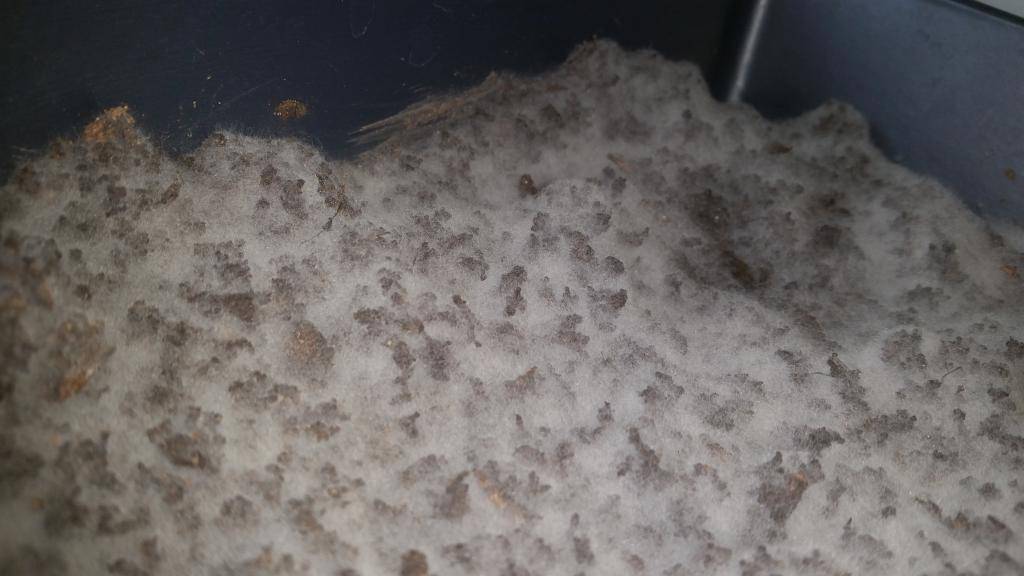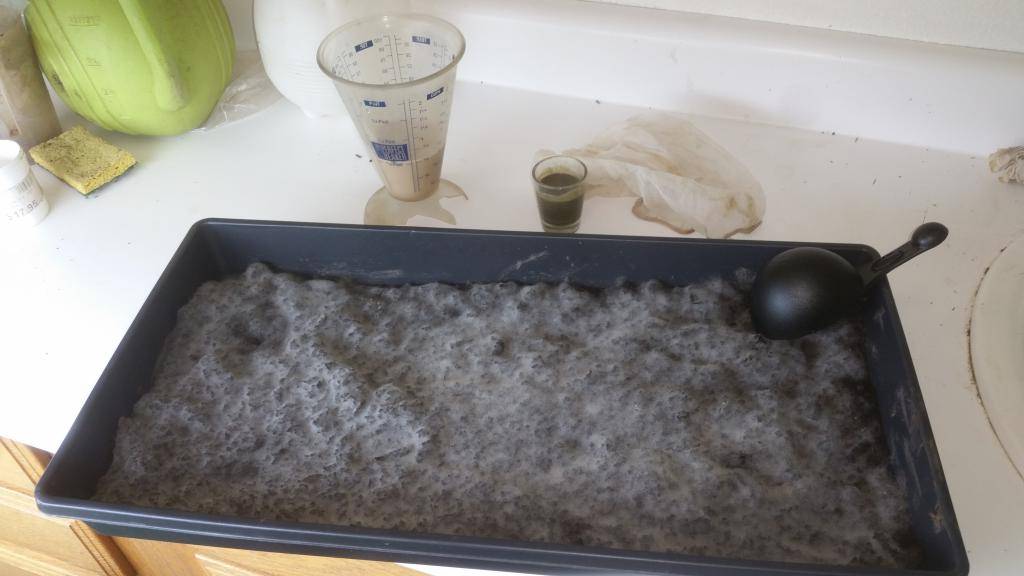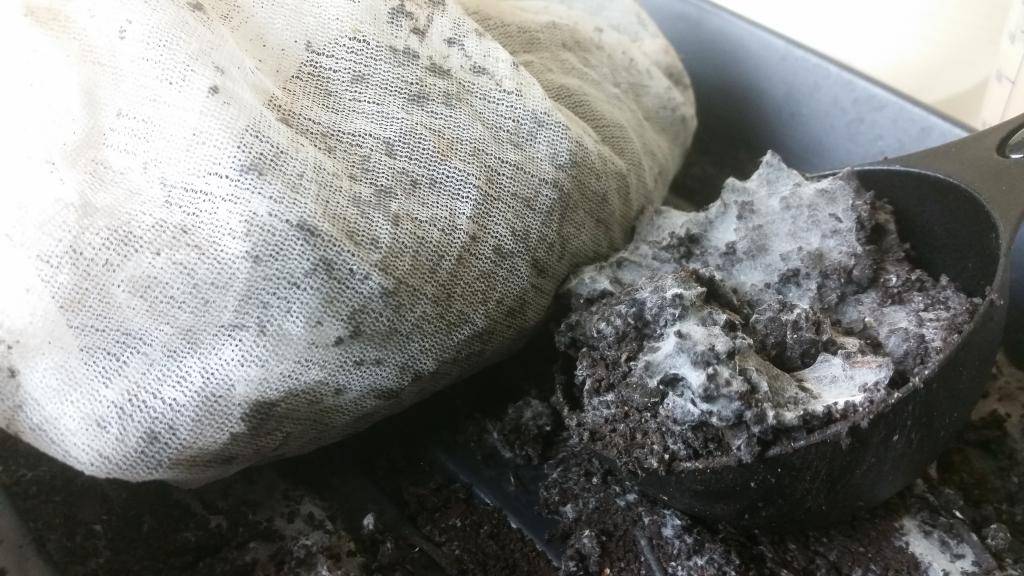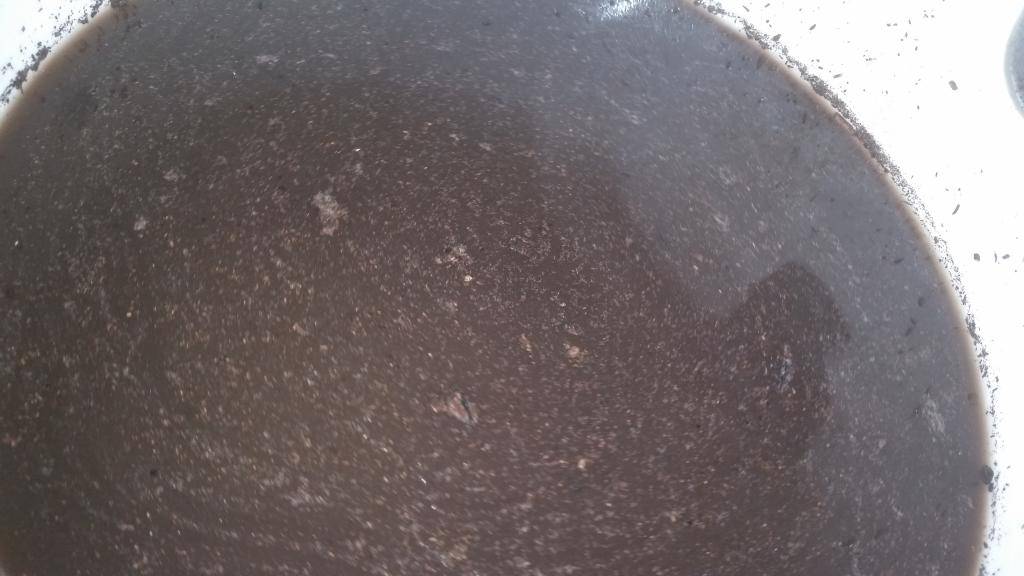leadsled
Member
Compost extract is the ticket. Faster and no brewing needed.
Time to wake up and smell the compost, fish and seaweed.
Compost extract can be made in a few minutes anytime on the fly. No need for expensive air pumps, compost tea brewers, and tanks.
Increase the odds of growing the “correct microorganisms” for your plant by allowing the reproduction of the organisms to occur in the soil and on plant surfaces rather than in a compost tea brewer. Also extended brewing periods will select for organisms that can grow in water, which may or may not be the correct biology for your specific plant. With a compost extract you have much less risk of it culturing anaerobic pathogenic organisms.
You can just use compost and extract it.
If you pretreat the compost with food source and let it sit before extracting helps move things along.
I pre-treat the compost blend used for the extract 48-72 hours before I make an extract. It will grow a fungal beard like this:

Recipe:
Take 1 cup ewc and 1 cup fungal compost or a composted forest product. (ca humus works well) Then add 4 tbsp insect frass.
Mix together. This is enough "compost blend" for a 5 gallon drench of undiliuted compost extract.
I then take 30 ml of fish hydrolysate (or sea shield or pacific gro) and then add about 200-300ml of water to a seedling flat. Add just enough to moisten it down.
Cover and let sit a 48-72 hours.

I then put 5 gallons of water into a 10 gallon bucket.
Get a compost extract bag. If you are in a remote area where they do not have compost bags, you can use a paint strainer.
Put 2 cups of this mix into the bag.

I twist the opening of the the bag to keep it shut. Then put in the water and smash and mead the bag with your hands. Keep doing this for a few minutes until the water is a dark brown.

Then I immediately add 1tbsp kelp powder and 4tbsp fish hydrolysate.
or if you got the AEA stuff. 10ml sea stim and 60ml sea shield. (alternative is pacific gro oceanic fertilizer, can be had from DTE distributors)
Take both and add to your compost extract. Mix well and drench your plants with it.
Can be used full strength or can be diluted as needed to ensure complete soil coverage.
Recipe is for 5 gallons can multiple up or down for larger or smaller batches.
Here is a foliar extract recipe for 1 gallon.
Lower rates are used for a foliar vs a drench.
California Humus = 12ml a gallon - 3 tsp
Worm Castings = 12ml a gallon - 3 tsp
Insect Frass = 5ml a gallon - 1 tsp
Kelp Powder = 3ml - 1/2tsp
Fish Hydrolysate = 5ml - 1tsp
Can be applied weekly if you got the time. Usually see the plants praying for the sky after applying.
Please note:
This is not living biological extract a compost extract not to be confused with putting a tea bag in water.
If you got the proper tools and techniques to do it right, aact is excellent. But if someone does not have a do meter and microscope here is way to do things for less money and time and still get excellent results.
Bad aact. Not a myth at all. Bad compost not a myth either. Does not solely mean ecoli in the aact.
If you really want to make sure the aact is good use a microscope. Going off smell alone does not mean you brewed a good tea.
There is not the same air in the medium the microbes then do not take hold in the medium.
Hope that helps.
Time to wake up and smell the compost, fish and seaweed.
Compost extract can be made in a few minutes anytime on the fly. No need for expensive air pumps, compost tea brewers, and tanks.
Increase the odds of growing the “correct microorganisms” for your plant by allowing the reproduction of the organisms to occur in the soil and on plant surfaces rather than in a compost tea brewer. Also extended brewing periods will select for organisms that can grow in water, which may or may not be the correct biology for your specific plant. With a compost extract you have much less risk of it culturing anaerobic pathogenic organisms.
You can just use compost and extract it.
If you pretreat the compost with food source and let it sit before extracting helps move things along.
I pre-treat the compost blend used for the extract 48-72 hours before I make an extract. It will grow a fungal beard like this:
Recipe:
Take 1 cup ewc and 1 cup fungal compost or a composted forest product. (ca humus works well) Then add 4 tbsp insect frass.
Mix together. This is enough "compost blend" for a 5 gallon drench of undiliuted compost extract.
I then take 30 ml of fish hydrolysate (or sea shield or pacific gro) and then add about 200-300ml of water to a seedling flat. Add just enough to moisten it down.
Cover and let sit a 48-72 hours.
I then put 5 gallons of water into a 10 gallon bucket.
Get a compost extract bag. If you are in a remote area where they do not have compost bags, you can use a paint strainer.
Put 2 cups of this mix into the bag.
I twist the opening of the the bag to keep it shut. Then put in the water and smash and mead the bag with your hands. Keep doing this for a few minutes until the water is a dark brown.
Then I immediately add 1tbsp kelp powder and 4tbsp fish hydrolysate.
or if you got the AEA stuff. 10ml sea stim and 60ml sea shield. (alternative is pacific gro oceanic fertilizer, can be had from DTE distributors)
Take both and add to your compost extract. Mix well and drench your plants with it.
Can be used full strength or can be diluted as needed to ensure complete soil coverage.
Recipe is for 5 gallons can multiple up or down for larger or smaller batches.
Here is a foliar extract recipe for 1 gallon.
Lower rates are used for a foliar vs a drench.
California Humus = 12ml a gallon - 3 tsp
Worm Castings = 12ml a gallon - 3 tsp
Insect Frass = 5ml a gallon - 1 tsp
Kelp Powder = 3ml - 1/2tsp
Fish Hydrolysate = 5ml - 1tsp
Can be applied weekly if you got the time. Usually see the plants praying for the sky after applying.
Please note:
This is not living biological extract a compost extract not to be confused with putting a tea bag in water.
If you got the proper tools and techniques to do it right, aact is excellent. But if someone does not have a do meter and microscope here is way to do things for less money and time and still get excellent results.
Bad aact. Not a myth at all. Bad compost not a myth either. Does not solely mean ecoli in the aact.
If you really want to make sure the aact is good use a microscope. Going off smell alone does not mean you brewed a good tea.
There is not the same air in the medium the microbes then do not take hold in the medium.
Hope that helps.
Last edited:


